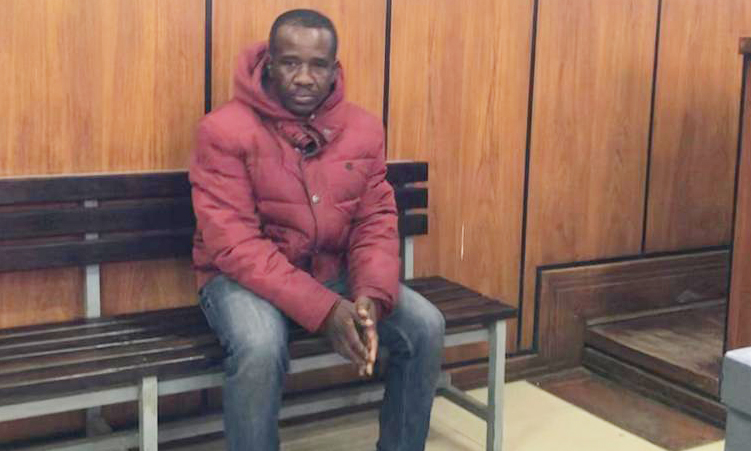SAN FRANCISCO – In the coming weeks, San Francisco artists Charley Brown and Mark Evans will be rolling up hundreds of large paintings into tall tubes and shipping them to Dubai, where they will adorn the ceilings and walls of a luxury hotel.
The artists are among a group of American muralists benefiting from a weak dollar and a desire – especially strong in Asia – to decorate resorts, public buildings and private homes with images drawing on Western art traditions. “A lot of times they want these hotels to have a more modern, a more Western look,” said Vicki Khuzami, a New York artist who painted murals for Tokyo Disneyland in the 1990s.Brown, 62, and Evans, 57, are finishing up a roughly US$700 000 commission for the 1 539-room Atlantis resort in Dubai, where rooms start at US$454 a night, to open in September.The hundreds of pieces painted on fireproof muslin cotton fabric will be assembled in Dubai, including murals for seven domes, some of which are 50 feet across.”It used to be that the rest of the world, especially Asia, couldn’t afford us coming,” said Eric Grohe, 63, a muralist who lives in Washington state.”Now we are getting requests from everywhere: South America, Europe, Asia.””About two years ago two things happened.The US dollar had been falling a lot …and when we first put up our Web site it went on all over the planet,” he said.”Then we started getting serious requests from India, Pakistan, wherever, and we give them what we would have to charge if we were working here in the United States and nobody blinks an eye.”His projects typically start at US$180 000 to US$200 000.One work Grohe is now doing for a Florida hospital will cost US$320 000, he said.ANCIENT TRADITION Mural-style paintings date back deep into human history, perhaps beginning with paintings by people in their caves.Ancient Egyptians decorated their tombs and temples with wall paintings, and Romans also painted their public buildings.In Europe, the Baroque era from the 17th century brought a flourishing of mural paintings inside the huge interior spaces of churches and majestic palaces.Many of today’s muralists prepare their work in studios to be shipped and assembled later at their ultimate destination.That means American murals can end up in Japan, Dubai, Macau or any other locale that can afford it.At the Evans & Brown studio, Evans does the initial research and design.In the case of the Dubai commission, he had to stay clear of depicting people, in keeping with Islamic tradition.One dome mural incorporates shell themes, another references Middle Eastern jewellery.Murals can indeed cause political outrage.An Iranian mural of the assassin of Egyptian President Anwar Sadat has been an obstacle to full diplomatic relations between the two nations.Brown then paints the initial full-size themes, and he and up to about a dozen others expand the images in their 84-foot long studio, where walls stretches as high as 16 feet.”It’s like juggling plates on several poles,” Brown said of the complexity of organising such large projects.Nampa-Reuters”A lot of times they want these hotels to have a more modern, a more Western look,” said Vicki Khuzami, a New York artist who painted murals for Tokyo Disneyland in the 1990s.Brown, 62, and Evans, 57, are finishing up a roughly US$700 000 commission for the 1 539-room Atlantis resort in Dubai, where rooms start at US$454 a night, to open in September.The hundreds of pieces painted on fireproof muslin cotton fabric will be assembled in Dubai, including murals for seven domes, some of which are 50 feet across.”It used to be that the rest of the world, especially Asia, couldn’t afford us coming,” said Eric Grohe, 63, a muralist who lives in Washington state.”Now we are getting requests from everywhere: South America, Europe, Asia.””About two years ago two things happened.The US dollar had been falling a lot …and when we first put up our Web site it went on all over the planet,” he said.”Then we started getting serious requests from India, Pakistan, wherever, and we give them what we would have to charge if we were working here in the United States and nobody blinks an eye.”His projects typically start at US$180 000 to US$200 000.One work Grohe is now doing for a Florida hospital will cost US$320 000, he said.ANCIENT TRADITION Mural-style paintings date back deep into human history, perhaps beginning with paintings by people in their caves.Ancient Egyptians decorated their tombs and temples with wall paintings, and Romans also painted their public buildings.In Europe, the Baroque era from the 17th century brought a flourishing of mural paintings inside the huge interior spaces of churches and majestic palaces.Many of today’s muralists prepare their work in studios to be shipped and assembled later at their ultimate destination.That means American murals can end up in Japan, Dubai, Macau or any other locale that can afford it.At the Evans & Brown studio, Evans does the initial research and design.In the case of the Dubai commission, he had to stay clear of depicting people, in keeping with Islamic tradition.One dome mural incorporates shell themes, another references Middle Eastern jewellery.Murals can indeed cause political outrage.An Iranian mural of the assassin of Egyptian President Anwar Sadat has been an obstacle to full diplomatic relations between the two nations.Brown then paints the initial full-size themes, and he and up to about a dozen others expand the images in their 84-foot long studio, where walls stretches as high as 16 feet.”It’s like juggling plates on several poles,” Brown said of the complexity of organising such large projects.Nampa-Reuters
Stay informed with The Namibian – your source for credible journalism. Get in-depth reporting and opinions for
only N$85 a month. Invest in journalism, invest in democracy –
Subscribe Now!









